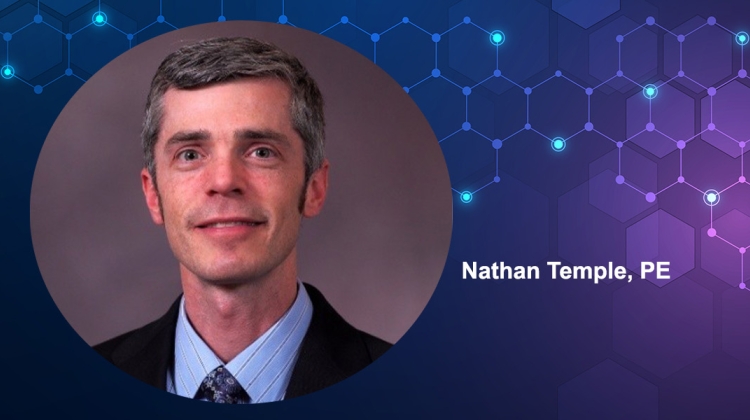“You start off in the engineering plant and learn all the different systems and how they integrate, how to start up and operate a nuclear reactor and all the water, steam, support, and safety systems. If you make a mistake on a log entry in a nuclear power plant, you line it out, date, initial, and put the correct information.
There’s a lot of good documentation practices, and it is in fairly close alignment with the nature of the pharmaceutical industry.”
Nathan started his civilian career at CAI. “At the time, they had about 50 employees and about two-thirds were former Navy nuclear trained. I was excited because it was an industry where I could continue to make a difference.”
Twenty years later, Nathan is still making a difference as Global Director of Commissioning, Qualification, and Validation at CAI. He is in charge of strategy, consistency of method, and deploying best-in-class practices around commissioning, qualification, and validation. The 100% employee-owned CAI now has over 850 employees.
“The majority of our work is in commissioning, qualification, and validation, and we have put together a really exciting model that’s focused on op-erational readiness and operational excellence—and commissioning and qualification (C&Q) is one element of that process—but we’re focused on the full life cycle from the idea to market with the focus to get needed medicines to patients.”
“I really enjoy working with clients looking at the full life cycle, whether it’s a greenfield or brownfield project,” Nathan said. “One recent client was an advanced therapy medicinal product project with only 10 employees, and they had 12 months to construct a facility to begin clinical trials and go into commercial manufacturing.”
“It was really exciting to help them determine all the steps that it was going to take to deliver product to patients. The foundation for methodology comes from the ISPE Baseline® Guide: Commissioning and Qualification (Second Edition) and ASTM E2500. Authors from both of those guides are on the C&Q Community of Practice (CoP) Steering Committee, and it’s exciting to discuss those methodologies with CoP members and then bring great ideas from the CoP to industry.”
Members of the C&Q CoP Steering Committee regularly present at ISPE conferences, write blogs, and provide expertise on guidance documents. In the past year, they developed a C&Q benchmarking survey intended to provide a comprehensive view of the industry’s current state—including the adoption rate of quality-risk-management-based integrated C&Q, C&Q best practices, and key performance indicators—and they are still working to com-pile data from it and present their findings.
They also have established a subcommittee exploring best practices in paperless validation. According to Nathan, “the future in our space is a full data model associated with product and process knowledge up front that translates through a much more efficient streamlined process, which means quicker to patient and less effort, duration, and cost. There are a lot of exciting developments in the industry in the C&Q space and ISPE is right there on the forefront.”
Nathan encourages ISPE members, and especially Emerging Leaders, to participate in ISPE activities. “Get involved, because it is an investment in your future. We need people who are passionate and have good ideas about what we need to learn more about. You can get involved on any level. Sometimes it is good to step outside your comfort zone.”





